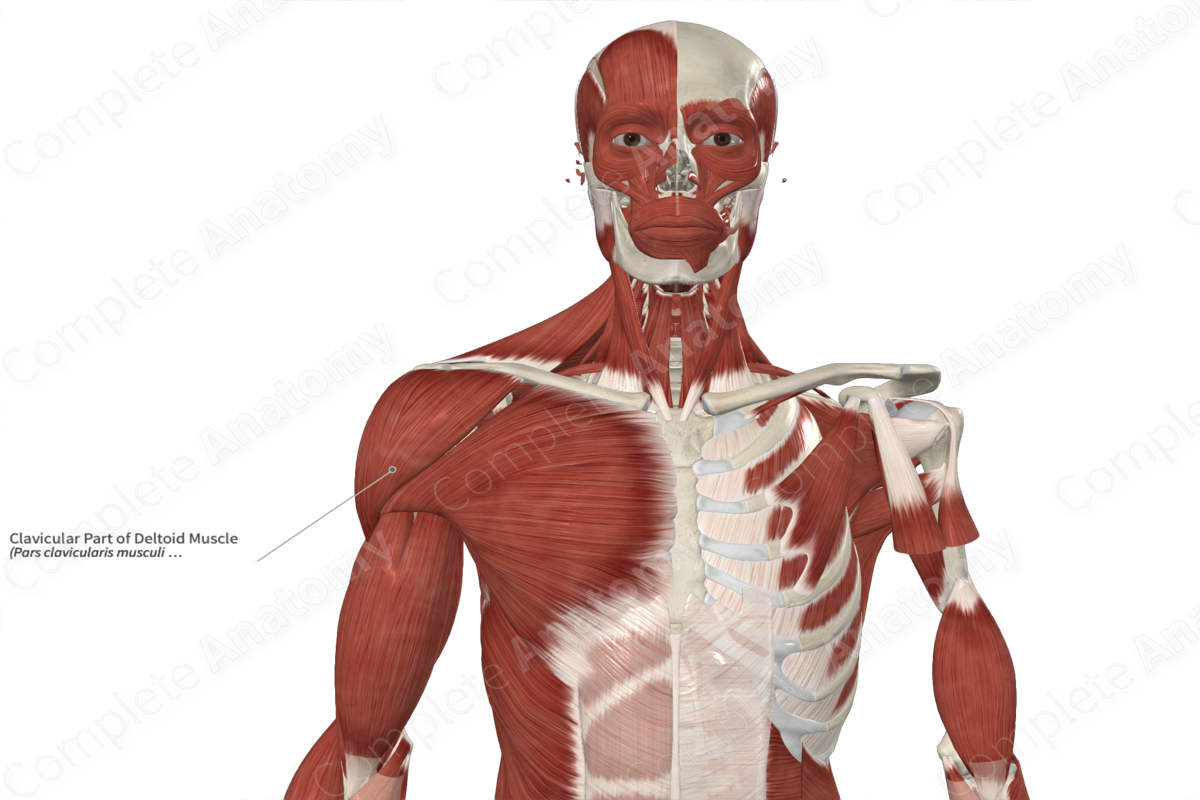
Quick Facts
Origin: Lateral one third of clavicle.
Insertion: Deltoid tuberosity of humerus.
Action: Flexes and medially rotates arm at glenohumeral (shoulder) joint.
Innervation: Axillary nerve (C5-C6).
Arterial Supply: Acromial and deltoid branches of thoracoacromial artery, anterior and posterior circumflex humeral and subscapular arteries, deltoid branch of deep brachial artery.
Related parts of the anatomy
Origin
The clavicular part of the deltoid muscle originates from the anterosuperior aspect of the lateral one third of the clavicle.
Insertion
The muscle bellies of the acromial, clavicular, and scapular spinal parts of the deltoid muscle travel inferolaterally and converge to a single tendon. This tendon is short, thick and inserts onto the deltoid tuberosity of the humerus.
Key Features & Anatomical Relations
The deltoid muscle is the thick triangular muscle that gives the shoulder its rounded contour. It is composed of three heads:
- a clavicular part, which is the anterior unipennate portion;
- an acromial part, which is the middle multipennate portion;
- a scapular spinal part, which is the posterior unipennate portion.
The deltoid muscle is located:
- superficial to the glenohumeral (shoulder) joint, the proximal tendons of the biceps brachii and triceps brachii muscles, and the axillary nerve;
- deep to the deltoid fascia and the superior lateral brachial cutaneous nerve;
- lateral to the pectoralis major, trapezius and infraspinatus muscles.
The space located between the inferomedial margin of the clavicular part of deltoid muscle and the superolateral margin of the pectoralis major muscle is known as the infraclavicular fossa, through which the cephalic vein passes.
Actions & Testing
Regarding the clavicular part of deltoid specifically, it is involved in multiple actions:
- flexes the arm at the glenohumeral (shoulder) joint;
- medially rotates the arm at the glenohumeral joint;
- assists in transverse adduction of the arm at the glenohumeral joint (i.e., it adducts the flexed arm along the transverse plane);
- helps stabilize the glenohumeral joint during abduction of the arm.
The deltoid muscle can be tested by abducting the arm beyond the 30° position, against resistance, during which it can be seen and palpated (Standring, 2016).
References
Standring, S. (2016) Gray's Anatomy: The Anatomical Basis of Clinical Practice. Gray's Anatomy Series 41st edn.: Elsevier Limited.



